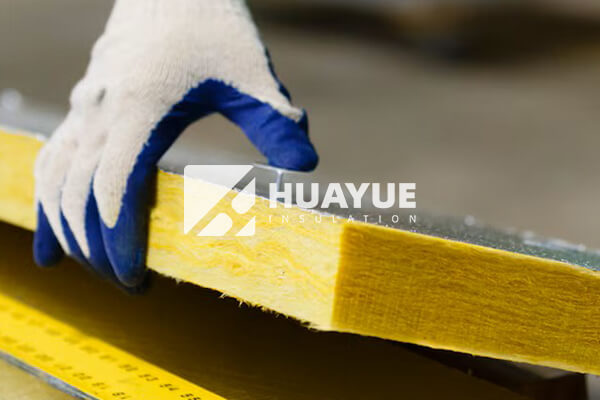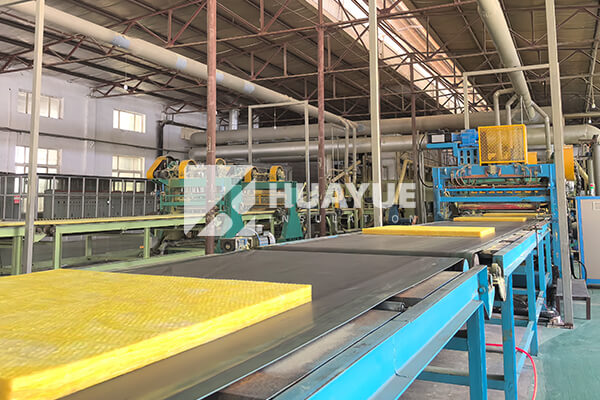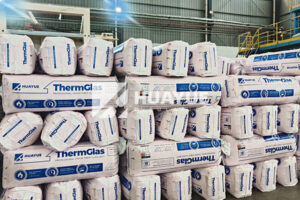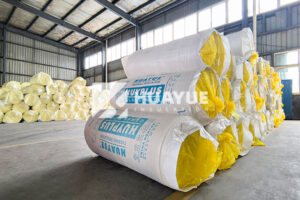What is High Density Fiberglass Insulation and Why Should You Consider It for Your Building Project?
Sometimes, better insulation is the difference between a comfortable building and a costly headache. But what exactly is high density fiberglass insulation, and is it right for you?
High density fiberglass insulation delivers superior thermal performance in compact spaces, offering improved energy savings, sound control, and fire resistance. It suits demanding commercial or residential projects, especially where thickness is restricted and high R-value is critical.

Many builders and engineers want an insulation material that is reliable, safe, and cost-effective. Sometimes, it’s hard to make the right decision with so many options. In this article, I break down what sets high density fiberglass insulation apart, explore your choices, and explain why I trust HUAYUE to deliver on quality.
What is High Density Fiberglass Insulation?
Sometimes, standard insulation just can’t keep up with demanding building standards. Are you curious about what makes high density fiberglass unique?
High density fiberglass insulation is a product made by compressing fiberglass fibers into a denser material, giving it better thermal resistance and sound dampening properties compared to standard fiberglass.

If you have run into building codes or design requirements that need higher R-values in a thinner package, you understand the value of high density fiberglass insulation. Traditional fiberglass batts are effective in general, but there often isn’t enough space for thick layers. High density fiberglass solves this. The manufacturing process packs more glass fibers into each inch, so you get better insulation in a smaller space. This allows you to meet strict energy codes or performance targets without increasing wall or roof thickness.
In my experience, this product works well in areas where you need both thermal performance and sound reduction. For example, dense fiberglass is popular in exterior wall cavities, attics in colder zones, and between floors in multi-unit buildings. It is common to see this material specified in commercial construction, as well as high-end residential jobs where attention to detail and comfort matter most. Dense fiberglass doesn’t sag or lose its shape over time like materials that rely on loft or trapped air, so once installed, it stays effective for decades. Its fire resistance and non-combustibility can also help you satisfy safety codes.
How High Density Fiberglass Insulation Compares
| Attribute | Standard Fiberglass | High Density Fiberglass |
|---|---|---|
| Typical R-value/inch | 2.9-3.3 | 4.2-5.0 |
| Density (kg/m3) | 9-16 | 24-32 |
| Sound Control | Good | Very Good |
| Space Needed | More | Less |
| Fire Resistant | Yes | Yes |
| Typical Uses | Walls, ceilings | Tight cavities, high performance projects |
What are the Types of Fiberglass Insulation?
Is every fiberglass product the same? Picking the right type starts with knowing your options.
Fiberglass insulation comes in several forms: batt, blanket, board, pipe, and custom preformed sections for HVAC and specific applications. Each is designed for different placement, performance, or installation needs.
Some projects need insulation that fits right into standard wall cavities. Others require custom solutions for irregular shapes or industrial equipment. In my work, I choose between these main options:
Main Types of Fiberglass Insulation
| Type | Description | Best Use Cases |
|---|---|---|
| Blanket (Batt/Roll) | Pre-cut or rolled, fits between studs/joists | Walls, floors, ceilings |
| Board | Rigid panels with higher density | Roofs, HVAC ductwork, equipment |
| Pipe | Cylinders for wrapping pipes, available in several sizes | Plumbing, process piping |
| HAVC Boards | Custom boards for duct insulation and air handling units | Commercial air systems |
| Custom/Prefabricated | Specially cut or shaped pieces for unique projects | Industrial and OEM applications |
Understanding these types can help you select the right product for thermal needs, sound control, or fire safety. For example, if you need to insulate a hot water pipe or a chemical storage tank, pipe insulation is the best fit. For warehouse ceilings or metal buildings, board products give more support and higher R-values. I value suppliers who can offer all these variants, and even customize dimensions for unique project requirements.
How Thick is R30 High Density Insulation?
Will a designated R-value fit in your design? It’s a common concern when space is tight.
R30 high density fiberglass insulation is typically 8.25 to 9 inches (210-230 mm) thick, much thinner than standard R30 fiberglass, making it ideal for confined spaces.
When architects or engineers specify R30 insulation, it’s usually to meet specific energy standards in attics or roofs. Standard fiberglass batts for R30 might be as much as 10 inches thick, which doesn’t always work in low-profile roof or attic assemblies. That’s where high density fiberglass proves its worth. The denser material gives the same R-value with less thickness, so you can insulate effectively without compromising usable space or interfering with other building systems.
This type of product is a smart solution when retrofitting old buildings, or when structural needs limit the available insulation space. Working with HUAYUE, I have been able to specify R30 high density insulation on many international projects, and the consistency in thickness and quality helps avoid later construction headaches.
Why Choose Fiberglass Insulation for Your Building Project?
There are many materials to choose from. What makes fiberglass insulation such a practical solution?
Fiberglass insulation offers high thermal performance, non-combustibility, moisture resistance, cost effectiveness, and easy installation, making it a popular and proven choice for almost all building types.
You might see options such as mineral wool, polyurethane foam, or cellulose. Each has strengths, but fiberglass stands out for several reasons. First, it is a safe bet for thermal insulation. It does not burn, it resists mold and moisture, and it does not attract pests. In addition, fiberglass insulation is easy to cut and fit around obstructions, and can be installed in existing or new construction.
Beyond physical benefits, fiberglass is widely available and competitively priced. I have seen this play out in projects from high-rise hotels to chemical plants. Many building codes and green standards already recognize its performance, meaning your approvals are straightforward.
Why Choose HUAYUE for Fiberglass Insulation?
You have many suppliers on the market. What’s the HUAYUE advantage?
HUAYUE offers a full range of high-quality glass wool insulation products, massive capacity for continuous supply, global exports to 100+ countries, and expert service for custom and large-scale orders.

HUAYUE has three decades of experience. I appreciate their expertise and wide product line—batts, rolls, boards, pipes, HVAC panels, and custom solutions. No matter the complexity or scale of your industrial or building project, they have the resources to deliver. Efficient logistics and proximity to key ports mean fast, reliable shipping worldwide.
I’ve worked with projects where unique insulation packaging or sizing was necessary. HUAYUE can customize both. Their certifications—ISO, CE, SGS—offer peace of mind on quality and compliance. Plus, their history of successful exports and global partnerships makes them a name you can trust.
If you need reliable, high-performing insulation with responsive customer support, I recommend contacting HUAYUE. Their technical team makes it easy to design and order what you need, and their production capacity ensures on-time delivery, no matter how big your order is.
Conclusion
High density fiberglass insulation delivers effective thermal and acoustic solutions, especially in space-limited settings. Trust HUAYUE for consistent quality, full customization, and global expertise.
You may also be interested in:
Ready to Get Started?
Get in touch with our experts for personalized solutions tailored to your needs.
Get Free QuoteLatest Articles

Glass Wool Fire Rating: How Safe Is Your Insulation?
Dec 25, 2025
Let's Work Together
Ready to take your business to the next level? Get in touch with our team of experts and let's discuss how we can help you achieve your goals.
Get Free Solutions






